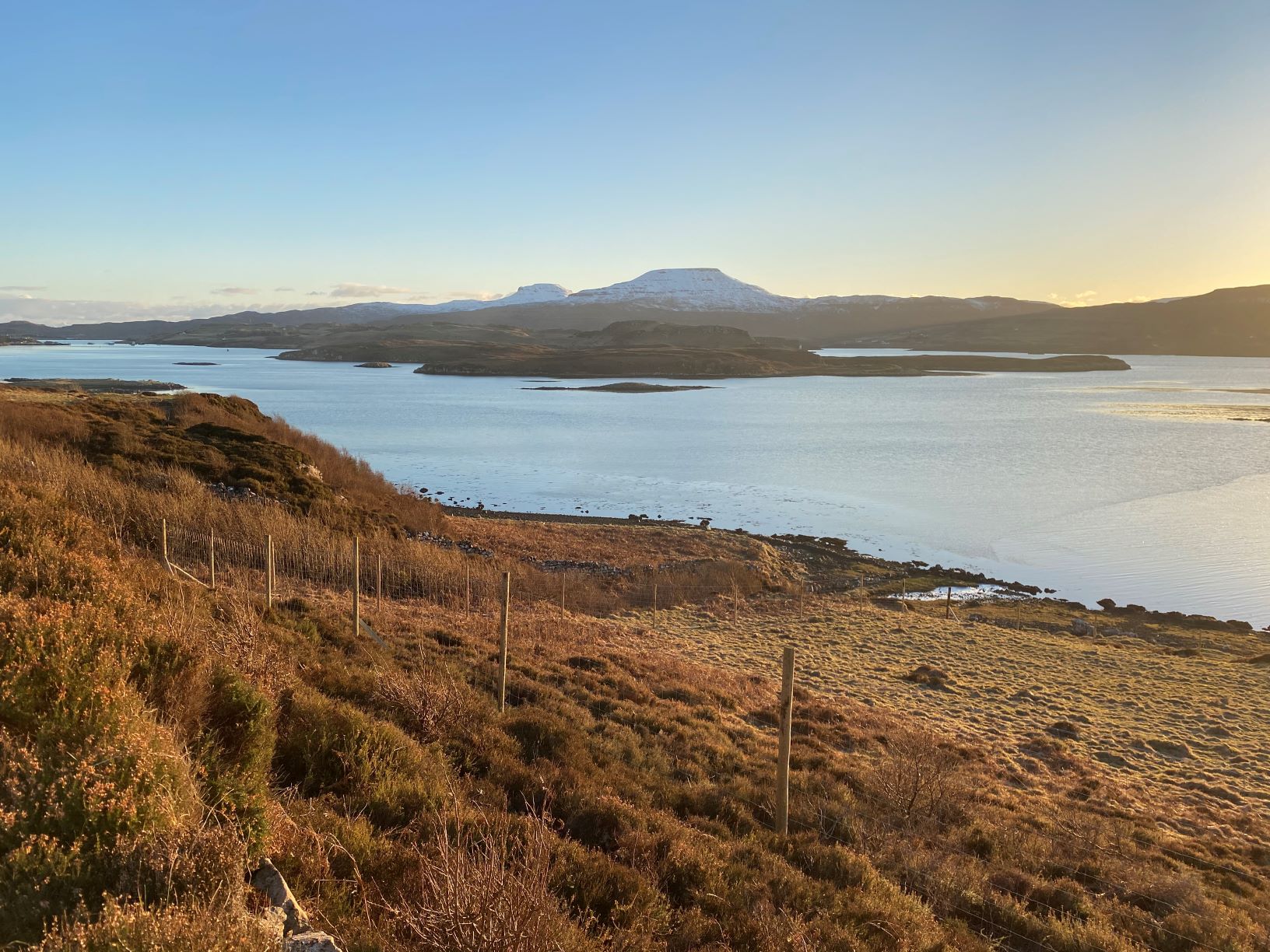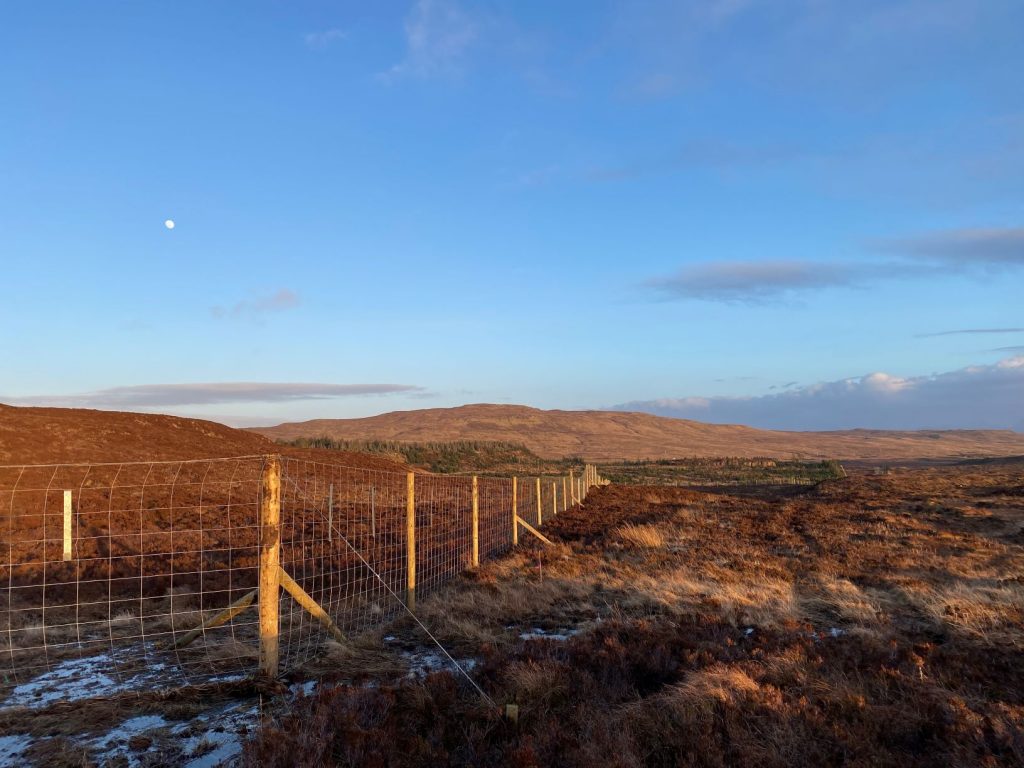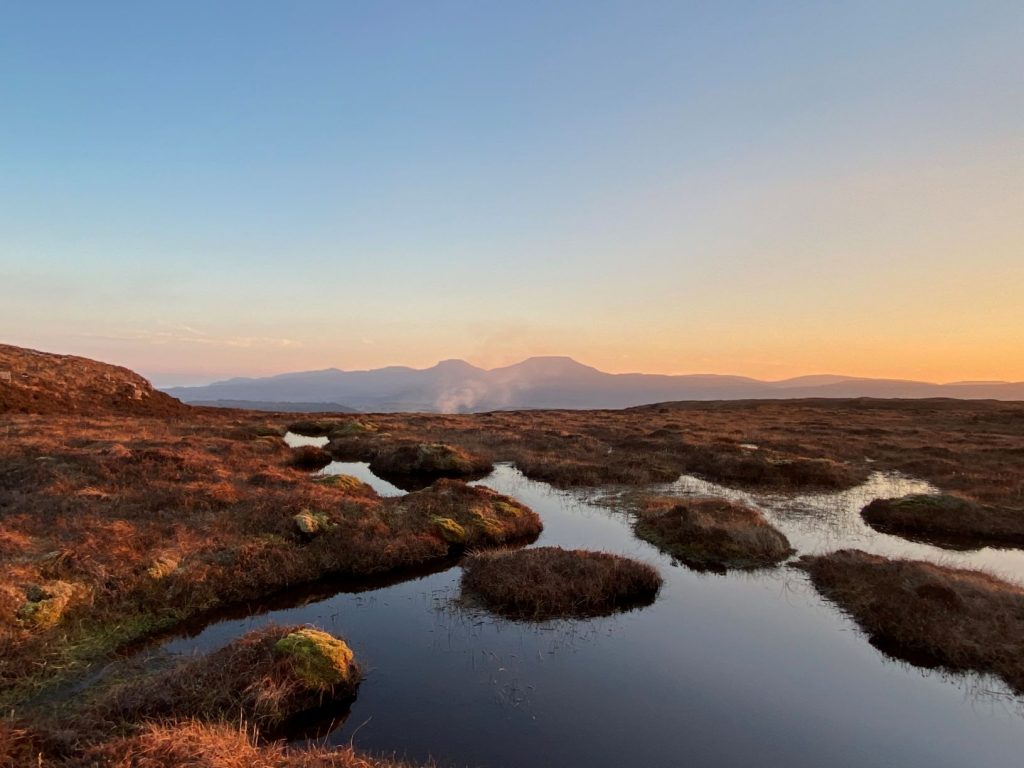MacLeod Estate Rewilding Update
This is a progress update on the largest native woodland creation scheme on the Isle of Skye, representing the first phase of the MacLeod Estate’s rewilding strategy which Hugh MacLeod, Estate Director, has been working on for the past decade. It is the most ambitious project of its kind on Skye, with this first phase focusing on transforming just under half of Dunvegan’s former home farm, Totachocaire, into a 240 hectare (593 acre) native woodland that will treble the size of the existing contiguous woodlands around Dunvegan Castle & Gardens. A total of 372,000 trees will be planted with different species mixtures to suit the land’s terrain and ecology. The carbon offset is estimated to exceed 64,000 tons over a 95-year period. This is in addition to the 80,000 native trees planted by the estate in 2010, to replace a monoculture coniferous plantation dating back to the post-war years, with further rewilding and peatbog restoration plans in development.

New deer fence enclosure
Ben Taylor of Scottish Woodlands, who are the MacLeod Estate’s agents on this project, said: “The tree planting itself will start in April, but we started groundworks on the 14th December 2020. The first phase of this native woodland creation scheme will generate two full time employees in the first year, 12 part time staff (4 fencers, 6 planters who will also undertake maintenance works, 1 Scottish Woodland managing assistant, 1 local stalker) who will be employed for the first 3 years at least. This excludes other jobs supported by this ambitious project including tree nurseries and fencing material suppliers, local accommodation providers etc. The work to date has focused on tidying up large areas of scrub vegetation to clear the way for tree planting, removal of now redundant agricultural fencing across the entire area, and commencement of ground preparation works. Mounding, either continuous on the best free draining ground, or inverted elsewhere, aims to provide weed free planting positions for the young saplings in the first year, while also raising them above the water table and improving conditions for decomposers and nutrient turnover. All new drains have been marked out by hand to meet best practice guidance and archaeological sites have been marked to avoid any disturbance. A new perimeter deer fence is being erected, with over 3000 metres built to date and new vehicle and pedestrian access points have been installed to facilitate public access. The intention is to plant approximately 25% of the 372,000 native trees by this Spring, with the remainder following in the period from October to the end of the year. This will allow time for saplings of local provenance to be grown specifically for the scheme. With the relatively low levels of native tree planting taking place on Skye in the recent past, seed availability for the local provenance zone is currently very low.”
Hugh MacLeod, Estate Director, said: “I am pleased with the speedy progress which has already been made on the first phase of the MacLeod Estate’s progressive native woodland creation and rewilding project. In light of the climate emergency the world is facing, this is a very modest project but at least it is a step in the right direction. According to the Native Woodland Survey of Scotland (NWSS), there is currently only 3200 hectares of native woodland on Skye (which has a total land area of 1656 km2 or 165600 hectares) – which means the native woodland coverage on the island is just 2%. This compares to a Scotland-wide estimate that native woodland covers only 4% of the land area (with a further 1% of ‘nearly native’ woodland). Only 13% of the UK’s total land area is covered in trees, compared with the European average of 35%, which is one reason why the Scottish Government has set ambitious annual tree planting targets to address this. One of the main obstacles to natural regeneration and nascent native woodland schemes in Scotland, is that the current deer population far exceeds that which the geographical land area can support. With no natural predators, a herd of 300 deer has the potential to grow to 3,000 in the space of 13 years if left undisturbed. The acclaimed ecologist, farmer and conservationist, Frank Fraser Darling, once advised the government that 60,000 might be the optimal deer population in the Highland region; currently the deer population in Scotland is estimated in excess of 750,000. This creates serious challenges for natural regeneration because unmanaged and growing deer populations end up destroying their habitats. The Estate has been actively managing deer numbers for over a decade, which is important because one of the conditions of this EU/Scottish government grant-aided project requires 45 deer to be culled in this native woodland area annually.”
- Ben Taylor of Scottish Woodlands with Brian McColm
- New deer grid installation
- Hugh MacLeod, Estate Director
- Totachocaire Farm
- Clearing scrub vegetation
- New deer fence
- Mounding works
- Drainage ditches
- Ready for planting
- Scrub burning
- Upland area above fields
- Result – more trees















